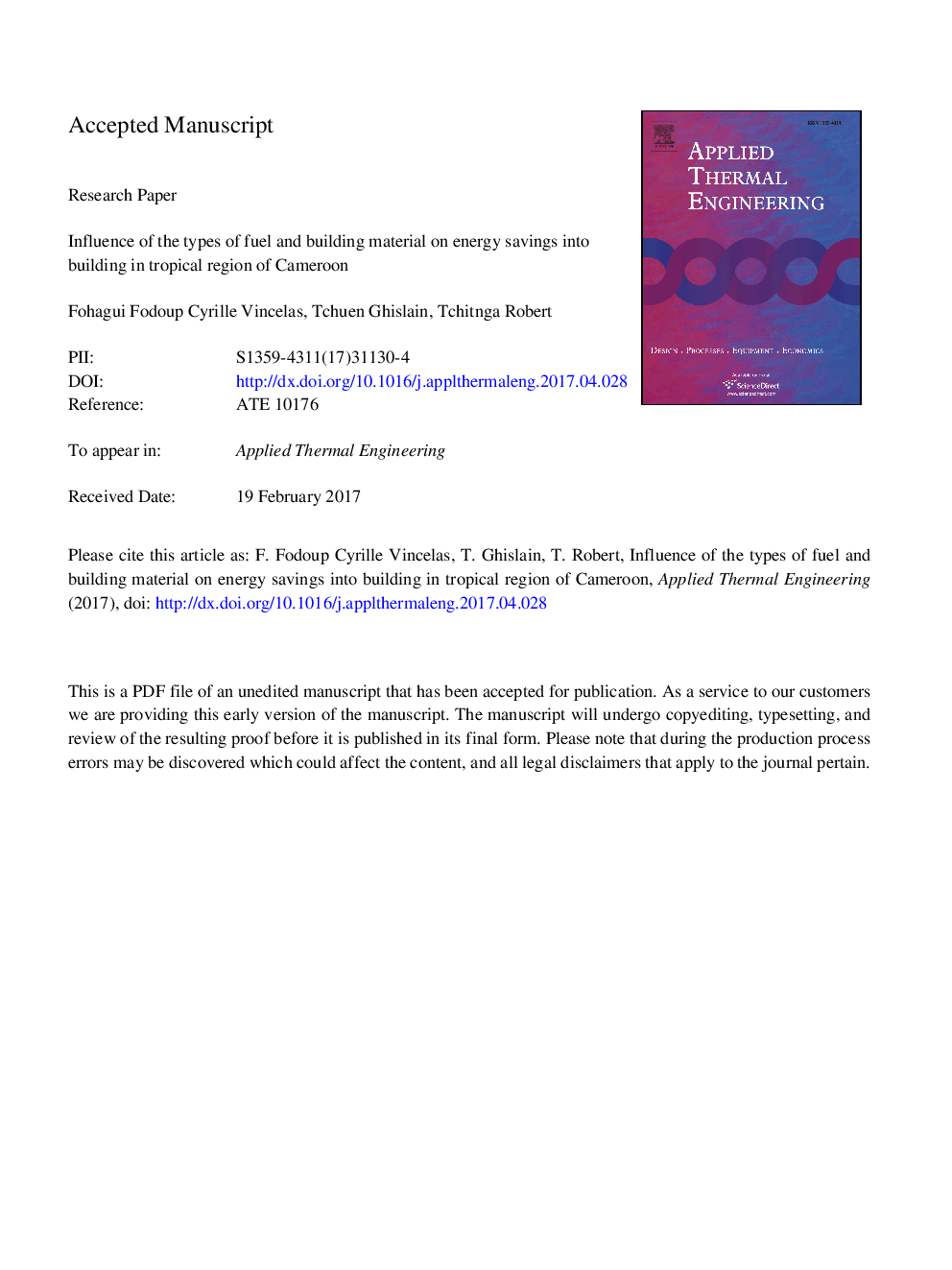| Article ID | Journal | Published Year | Pages | File Type |
|---|---|---|---|---|
| 4990970 | Applied Thermal Engineering | 2017 | 33 Pages |
Abstract
This study aims to investigate the influence of the combination of different types of fuel and building material on energy savings into buildings. The yearly cooling transmission loads of the building were determined using the degree-day's concept. The optimization was based on a life cycle cost analysis. Five different fuels (fuel oil, hydroelectricity, liquefied petroleum gas (LPG), natural gas and solar energy), six insulation materials (foamed polyvinyl chloride and polyurethane, expanded and extruded polystyrene, rock and glass wool) and five wall structures (sundry earth block (SEB), hollow concrete block (HCB), compressed earth block (CEB), heavyweight concrete block (HWCB), and stone) were considered in calculations. The optimum insulation thicknesses, energy savings, and payback periods for different combinations were determined. As a consequence the result show that the optimum insulation thickness varies between 0.2 and 14Â cm, energy cost savings shift between 3 and 155Â $/m2, and payback periods change between 0.66 and 6.11Â years depending on the fuel type, the insulation material and the wall type. The highest energy saving has been obtained by using hydroelectricity (86.7%), while de lowest was reached by using natural gas (13.8%) and the combination using solar energy was found to be more economic.
Related Topics
Physical Sciences and Engineering
Chemical Engineering
Fluid Flow and Transfer Processes
Authors
Fohagui Fodoup Cyrille Vincelas, Tchuen Ghislain, Tchitnga Robert,
